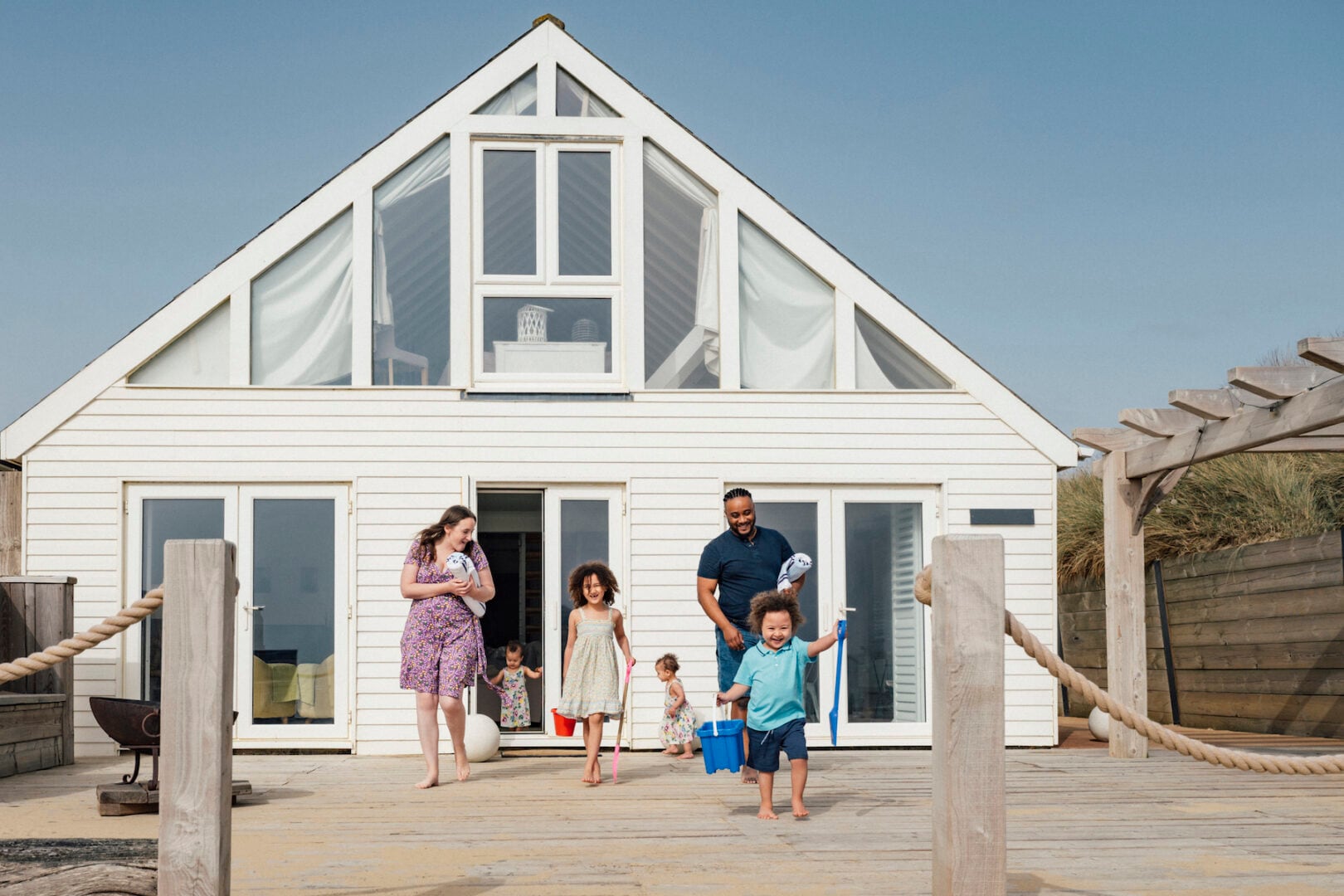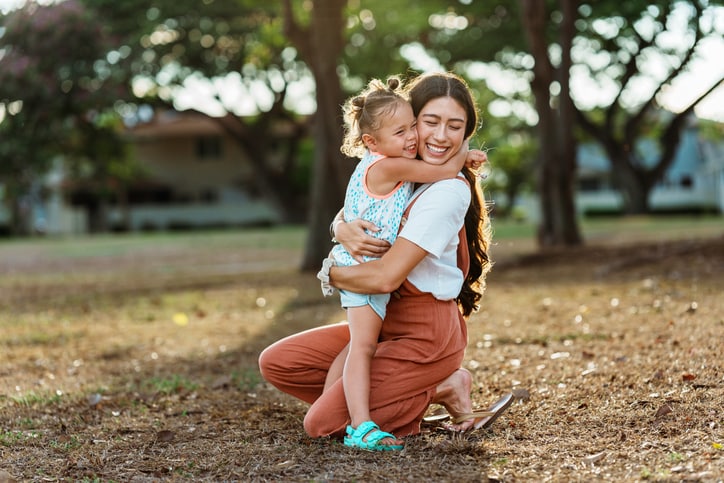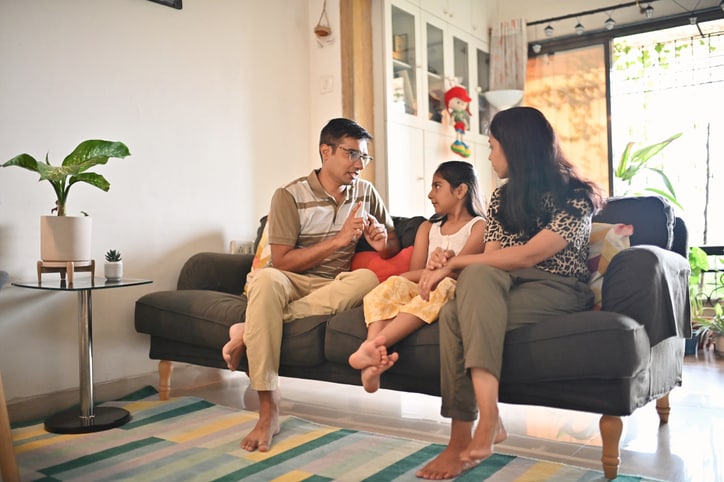Once upon a time, families chose their spring break vacations based solely on things such as location and price. Now, safety — COVID safety, that is — is another factor moms and dads have to weigh. While things aren’t quite as bleak as they were, say, a year and a half ago, there still are risks (and ways to mitigate them) to consider when brainstorming family spring break ideas.
“Vacations are going to be safer this spring break than last, but it is definitely not back to business as usual,” says Dr. Kunjana Mavunda, pediatric pulmonologist and director of the International Travel Clinic in Miami. “Because many people have either received COVID vaccines or have had COVID, in many communities in the U.S. herd immunity is higher than it was last year. Unfortunately,” she adds, “the virus continues to mutate, and children under 5 still aren’t eligible for the vaccine, so we still have to be vigilant.”
We may not be back to the days of family vacation planning when the biggest concern was whether or not there’d be a spot at the princess breakfast, but spring break family vacations are still doable. Here’s what the experts recommend for staying as safe as possible during spring break 2022.
“Vacations are going to be safer this spring break than last, but it is definitely not back to business as usual.”
— DR. KUNJANA MAVUNDA, DIRECTOR OF THE INTERNATIONAL TRAVEL CLINIC
Is spring break 2022 canceled?
No! But as Dr. Douglas Drevets, chief of infectious diseases at OU Health in Oklahoma City, points out, “risk is a moving target.” What does that mean? In short, there are a number of variables that will deem your trip “safe” or “risky.”
“Some of the most important factors include the number of cases where you are going, the activities you’re doing and the number of other people around,” explains Drevets. “So different vacations will have different levels of risk.” For example, Drevets notes, driving to the Grand Canyon, hiking outdoors and tent camping with your family would have lower risk than going on a cruise, where everyone is in constant close quarters.
To that point, he notes that one of the smartest things families can do is be aware of how much COVID-19 there is in the destination where they’re headed. (This is information that can be found on the Centers for Disease Control and Prevention (CDC) COVID Data Tracker.) From there, think about the types of activities you’ll be doing in order to get some idea of low risk versus high risk.
“How many precautions you choose to take — for example, wearing KN-95 masks or doing takeout only — will also affect the risk assessment,” says Drevets, “as well as your personal risk of having (or causing) a severe illness after infection.”
Drevets notes that fully vaccinated people who are boosted and generally healthy have a very low risk of severe outcome. “However, you might choose to be more cautious if you have several underlying health problems or are going to be around an older family member, who could have a more serious course of infection,” he says.
In other words: Beyond the transmission level in a specific destination, no two families’ risk factors will be the same.
How can I make a 2022 spring break vacation with kids as safe as possible?
Here are the best ways to ramp up safety when traveling, according to experts:
Get vaccinated and boosted
According to Drevets, one of the strongest ways to mitigate risk is to be fully vaccinated and boosted. The CDC recommends everyone ages 5 years and older get a COVID-19 vaccine.
Dr. Jeannie Kenkare, chief medical officer of PhysicianOne Urgent Care, adds that, if you are fully vaccinated and boosted, “the risk of infection while traveling is less likely than someone who is unvaccinated.” That said, even if you’ve been vaccinated, you can still get COVID. “While it is still possible to contract the virus, vaccinated patients are less likely to have severe illness, meaning lower risk of hospitalization and death from COVID-19,” she adds. “Getting boosted goes a long way to enhancing your protection against the virus.”
“Getting boosted goes a long way to enhancing your protection against the virus.”
— DR. JEANNIE KENKARE, CHIEF MEDICAL OFFICER
Protect kids under age 5
The fact that kids under age 5 are still too young to get vaccinated is “definitely still a concern,” says Moorjani, so some families may feel more comfortable delaying their travel plans until their young children are eligible for vaccination.
That said, Drevets notes that, generally speaking, “younger individuals and children are at much lower risk of having a bad outcome than adults, but low risk does not equal no risk,” he says. “If a child has an underlying health condition that could put them at higher risk for a bad outcome after infection, it’s important to consult their pediatrician about prevention strategies, including masking.”
Wear a mask
“Wear a well-fitting, high-quality mask, such as a surgical or KN-95, when in a crowded indoor area,” Drevets says. Additionally, keep in mind, masks aren’t optional on planes.
“The United States is currently under a federal mask mandate, which requires air travelers to wear masks inside airports and on airplanes to help reduce the spread of the COVID-19 virus,” says Kenkare. “It’s also important to note that some airlines have requirements as to what types of masks should be worn while traveling, so check those guidelines as you prepare for your trip.” (For example, some international airlines don’t allow cloth masks.)
“Some airlines have requirements as to what types of masks should be worn while traveling, so check those guidelines as you prepare for your trip.”
— DR. JEANNIE KENKARE, CHIEF MEDICAL OFFICER
Practice proper hygiene
“Proper hygiene while traveling will help reduce the risk of infection,” explains Kenkare. “Frequently wash your hands when in public places and avoid touching your eyes and face.
Social distance
“Maintaining physical distance when possible can also help reduce risk,” Kenkare adds.
Consider testing
Depending on where you’re going, keep in mind, you might need proof of a negative COVID-19 test and/or proof of COVID-19 vaccination before you reach your destination. “But even if a negative test is not required,” notes Kenkare, “testing before visiting friends and loved ones is always a good idea to ensure travelers are not spreading the virus, and it can help inform your choices.”
Choose your destination wisely
“Areas where vaccination rates are low and infection rates are high should be avoided altogether,” Mavunda says, adding that it’s also important to be informed about the travel and quarantining rules of a specific area when deciding on where to go. “Countries such as China have high vaccination rates and minimal infections, which may make them attractive, but keep in mind, they have strict quarantine rules, so it may not be worth it.”
Make sure all vaccinations are current
“While COVID is on everyone’s minds, it’s important to be up-to-date on other vaccines, such as the flu vaccine, which also helps protect you and your family,” points out Dr. Jean Moorjani, a pediatrician with Orlando Health Arnold Palmer Hospital for Children. “If you’re traveling internationally, check the CDC travel website for recommended vaccines.”
Spring break 2022 family vacation options, ranked most to least risky
Ready to get away? Here are a few spring break vacation ideas, ranked from most to least risky.
1. Taking a cruise
Across the board, experts agree that cruises are still among the most risky. “Despite their best efforts, cruises seem to continue to have COVID-19 outbreaks among those onboard,” Drevets says. “This would be considered a high-risk activity.”
“Despite their best efforts, cruises seem to continue to have COVID-19 outbreaks among those onboard.”
— DR. DOUGLAS DREVETS, CHIEF OF INFECTIOUS DISEASES
“The chance of getting COVID-19 on cruise ships is high because the virus spreads easily between people in close quarters, like those aboard ships,” Kenkare says. “The CDC recommends avoiding cruise ship travel for the time being, regardless of vaccination status. For those who choose to cruise, it is recommended to get tested one to three days before the trip and three to five days after the trip, regardless of vaccination status or symptoms.”
Also, as Moorjani adds, it’s important to remember that if you do decide to go ahead and go on a cruise, “it may look very different than in the past if certain ports won’t allow passengers to disembark.” In other words: Is it really worth it?
2. Theme parks
While theme parks may be safer this year than last, they aren’t necessarily your safest bet for spring break. “Some theme parks do temperature checks when you enter and many still suggest wearing masks in indoor spaces, but staff don’t necessarily enforce wearing masks inside — and theme parks don’t check vaccination status,” explains Mavunda, adding that it’s important to keep in mind that people from all over the U.S. and other countries may be visiting.
“If you have children under the age of 5, or if you haven’t been vaccinated or recently had COVID, there’s certainly a risk of infection since there are sure to be people who have the virus asymptomatic or not,” Mavunda continues. “Also, in theme parks, people tend to shout or laugh or talk loudly, which allows for aerosolization of the germs that they carry in their upper airway.”
“Finally,” she adds, “it’s difficult to social distance, especially when waiting in a line that may be an hour or more long and indoors.”
3. Traveling by plane (domestic and international)
While there are risks that come with traveling by plane, it’s generally considered safer than cruises, particularly if you’re vaccinated. “When it comes to air travel, if travelers are up to date on their vaccinations or have recently recovered from a COVID-19 infection, the risk of domestic and international travel is lower than those who are not vaccinated,” says Kenkare.
That said, there’s more to flying than, well, flying. “Air travel itself may be safer than what happens before and after air travel,” Mavunda says. “You have to get to the airport early, use airport facilities and be exposed to people who do not necessarily follow guidelines for social distancing, especially when boarding or going through security lines.”
Lastly, there’s your destination, and its rules, to consider. “It is recommended travelers check their destination’s COVID-19 situation and travel requirements before departure,” Kenkare adds, “as countries may have their own entry and exit requirements.”
4. Renting a vacation home
Generally, renting a home is considered safe (particularly if it’s just your family who will be in the home). So long as you’re careful when you’re out and about (aka, when you’re not in your rental), it’s one of the more low-risk options out there.
“Certainly, Airbnbs are less crowded than hotels, so this is lower risk simply because you would not be around and exposed to as many people,” says Moorjani. That being said, where you’re staying matters. “Renting an Airbnb is on the safe side, especially if it is a single family home or cabin, and it has been thoroughly cleaned before you arrive,” says Mavunda. “An Airbnb in an apartment building may lead to exposures in common areas, such as the lobby and in elevators.”
5. Renting a home with another family
“Renting a home with another family can be low risk if all parties are on the same page when it comes to testing and vaccination status,” Kenkare says. “If all parties involved are not within a high-risk population and up to date on their vaccinations, families should feel safe gathering.”
“At-home rapid antigen tests are a great way to establish peace of mind if no one is exhibiting symptoms of COVID-19 or has not had a COVID-19 exposure in the last 14 days,” she adds. “Take two at-home rapid antigen tests 36 to 48 hours apart, and only gather if both are negative.”
Should we test and/or quarantine after returning?
According to Drevets, it depends “on the risk of exposure to infection when on vacation and the risk (to others) of being infected when you return.”
“For example, if you will be caring for sick and elderly family members upon your return, it’s probably best to be tested, particularly if you feel sick, after returning in order to protect others,” he says. “Similarly, if you engaged in high-risk activities, such as being unmasked in crowded venues, it might be wise to test yourself before being around others.”
Kenkare adds that “testing upon return of travel, two to five days after a known exposure or if you start to experience symptoms such as fever, body aches, a persistent cough or a sore throat, is so important.” “If you have a known exposure or are feeling ill, it is best to operate under the assumption that you are COVID positive and follow all applicable quarantine and isolation guidelines — which change frequently — until you receive a negative PCR test or two negative at-home rapid antigen tests taken 36 to 48 hours apart.”






